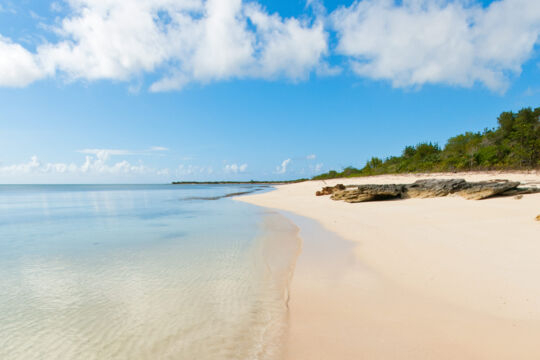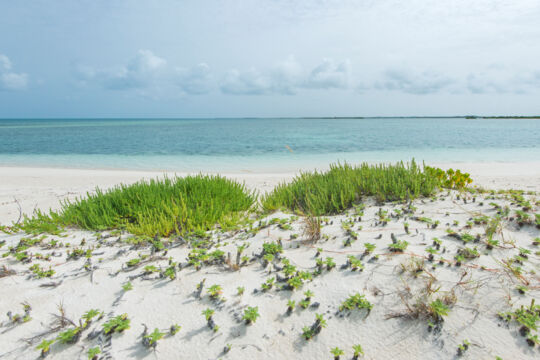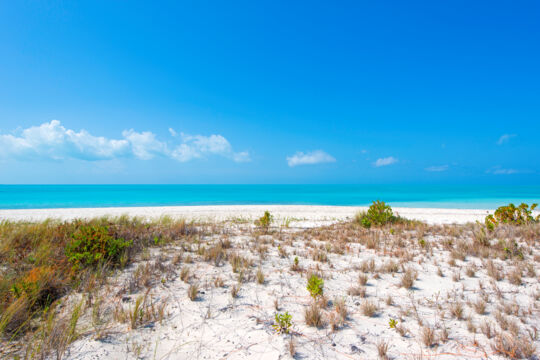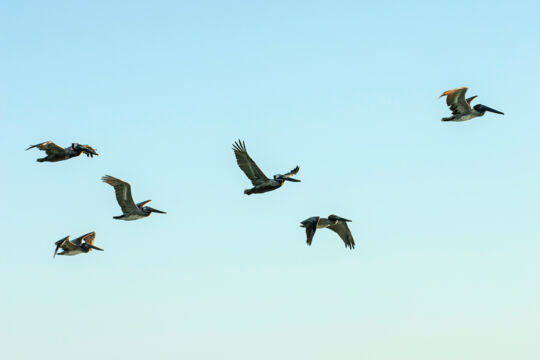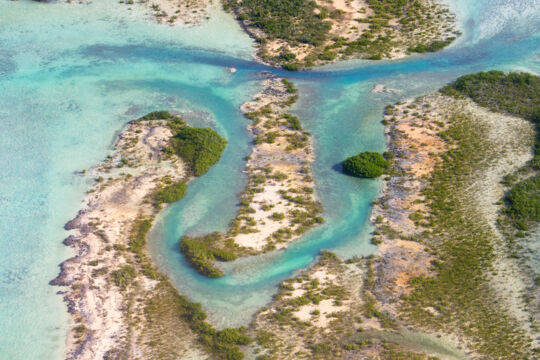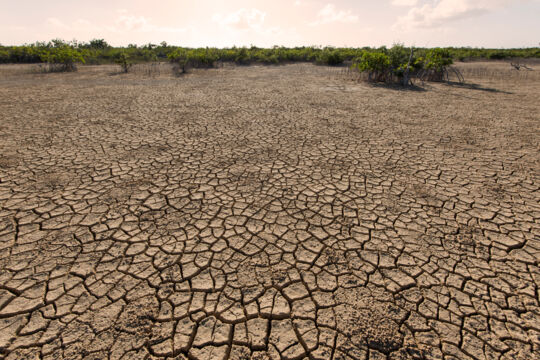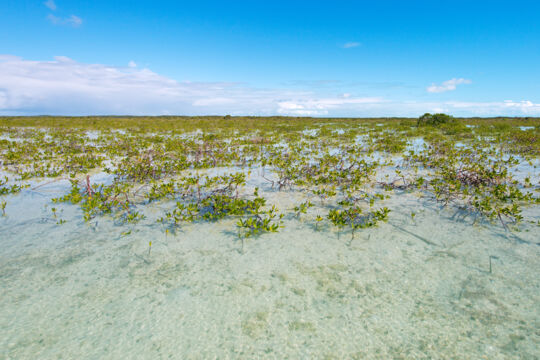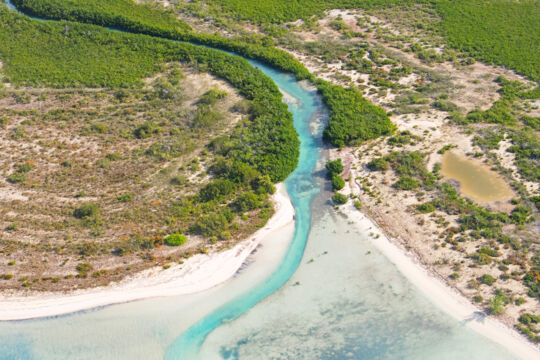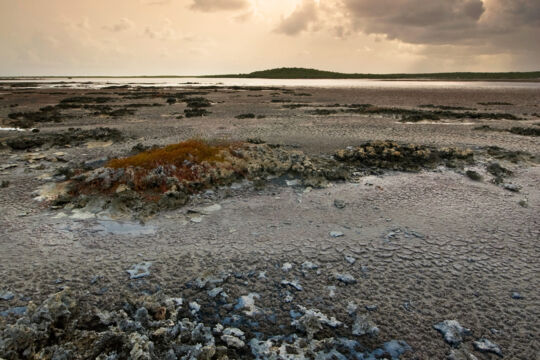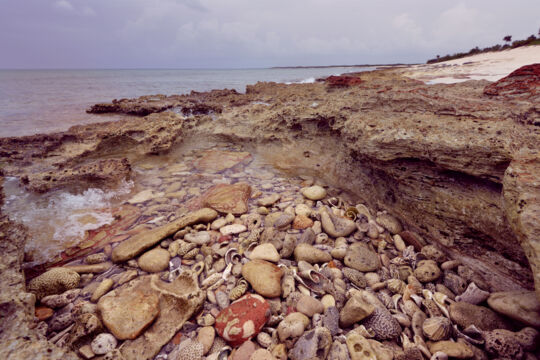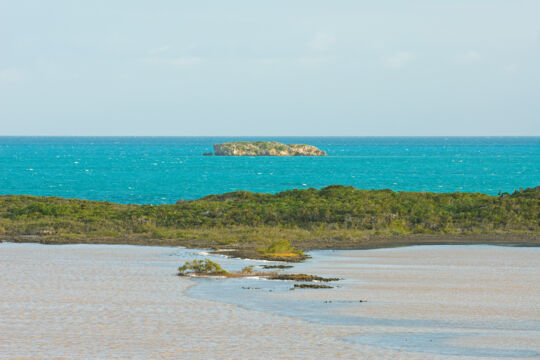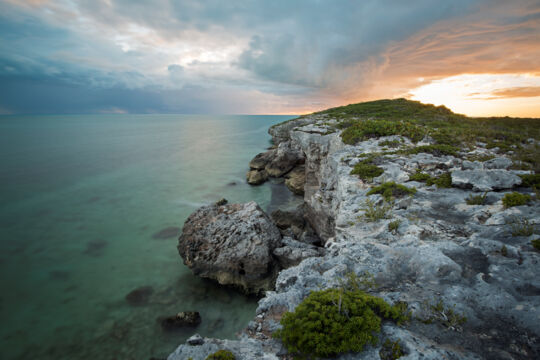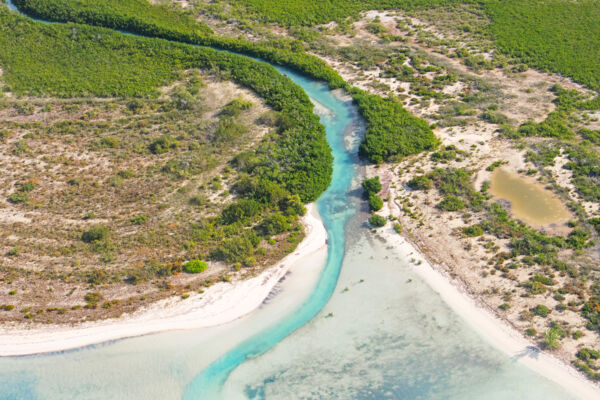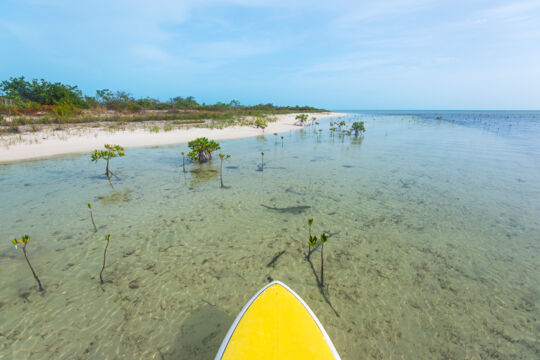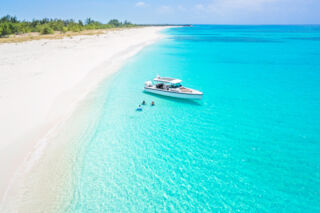Frenchman's Creek and Pigeon Pond Nature Reserve Providenciales
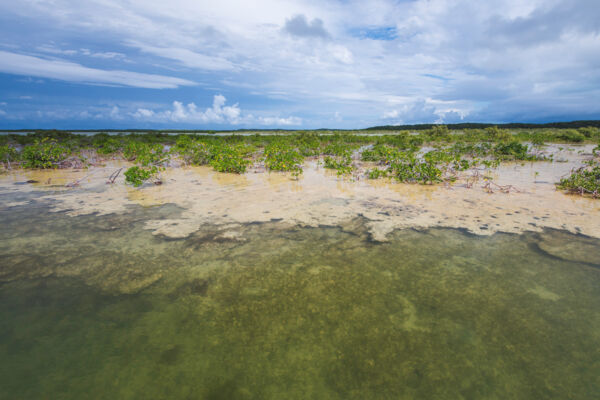
The Frenchman’s Creek and Pigeon Pond Nature Reserve is the largest section of protected land on Providenciales, covering an area of roughly eight square miles (21 km²). Inside the nature reserve are many unique and special natural features, including West Harbour Bluff with Split Rock and the Pirate’s Cave, Bonefish Point, Flamingo Creek Bay, the Proggin Bay salt flats, Pigeon Pond, and the White Flamingo Pond Blue Hole.
A wonderful spectrum of unique Turks and Caicos terrains and natural features are represented in the nature reserve, including lush red, black, and white mangrove wetlands, sandy beaches, coral reefs, ocean cliffs, dry and expansive underwater cave systems, blue holes, natural salt flats, seasonal freshwater ponds, and some of the best examples of weathered marine limestone ironshore in the country.
Unfortunately, access to many of the spectacular sights is difficult, due to a lack of roads and accesses. Much of the interior and coastline is remote and casual visits are not feasible.
Nature and History
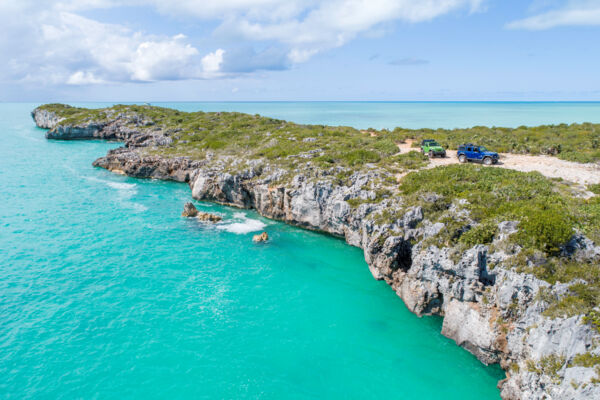
This sanctuary is a haven for a wide array of wildlife, including giant blue land crabs, many types of birds, conch, hawksbill turtles, lemon sharks, and many types of fish.
In addition to its natural treasures, Frenchman’s Creek is home to many historical sites spanning from the pre-Columbian Lucayan era to the post-Loyalist period. What was likely the second largest Lucayan village location in the Turks and Caicos is one of the many important locations inside the nature reserve.
Frenchman’s Creek has ample evidence of logging. Stumps and worked lumber show that many of the larger trees in the area were cut down. Most likely, the trees were cut down to be made into fittings for Caicos Sloops—while the trees found in these saline marshes never reach great heights, their wood is often quite strong and extremely resistant to rot.
In other areas, you can find very old burn mounds that are likely the remains of charcoal kilns from the post-Loyalist era. Examples of old glass bottles found in the area suggest that these events happened between the early and late 1800s.
Pigeon Pond

Pigeon Pond is a land-locked, hyper saline, shallow body of water found on the northeast end of the nature reserve. Although difficult to access, the area has unique rock formations and at times large numbers of bird life. During the dry season, expanses of mud flats are exposed when the water level gets low.
Pigeon Pond is one of the few areas on Providenciales where there’s a decent chance of spotting Caribbean flamingos.
Kayaking and Paddleboarding
The southern half of this nature reserve is a maze of mangrove trees and shallow channels of water.
Small lemon sharks, bonefish, and conch are plentiful, and the area is great for kayaking or stand-up paddleboarding. Conditions are good when wind speed isn’t too high, yet be aware that there can be currents in some of the channels when the tide is going out.
The best spot for launching is found about 4.25 miles (6.8 km) down the road (Tom Lightbourne Drive) to West Harbour Bluff.
West Harbour Bluff
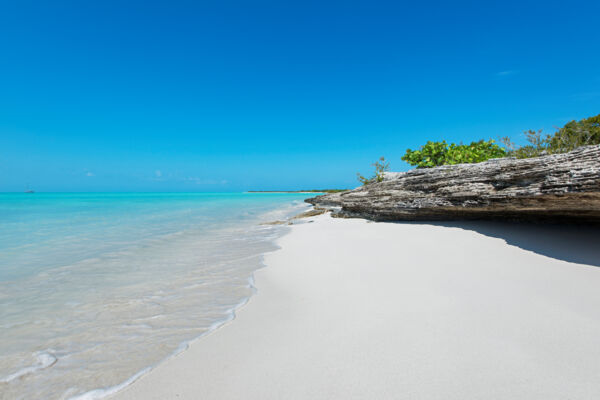
West Harbour Bluff is the southwest point of Providenciales and part of the Frenchman’s Creek and Pigeon Pond Nature Reserve. A cave, 200-year-old rock inscriptions, and limestone ocean cliffs are found on this small peninsula.
An unpaved road leads out to West Harbour Bluff, yet some stretches can be quite rough for small rental cars. If you’d like to explore the remote western side of Providenciales, it makes sense to rent a 4x4 or jeep.
To the north of West Harbour Bluff is the secluded beach of Bonefish Point.
Bonefish Point
Bonefish Point is a beautiful sandy peninsula on the southwestern side of the nature reserve. The area offers a lovely and very calm beach, and is a great wildlife watching location.
Flora Theft From the Nature Reserve
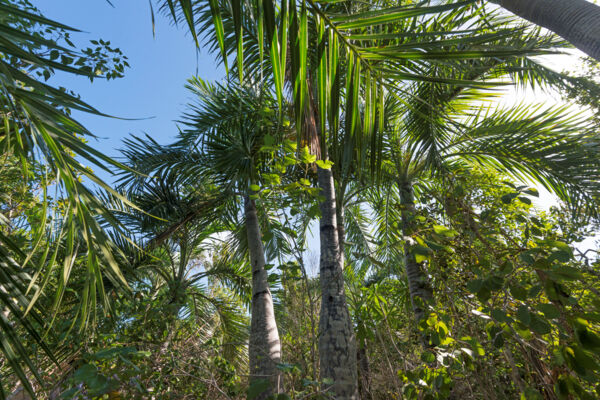
Sometime in 2017, hundreds of buccaneer palms (Pseudophoenix sargentii) of all sizes were stolen from the Frenchman’s Creek and Pigeon Pond Nature Reserve. This included trees that exceeded 12–14 feet (4–4.5 m) in height. The buccaneer palm is a very rare native palm in the Turks and Caicos, and one that is considered critically endangered in Florida.
This isolated seeding population of buccaneer palms included nearly every wild example of the tree on Providenciales and was very important to the environment and biodiversity of the Turks and Caicos, especially considering the tree's genetic isolation from the likewise limited populations found on North Caicos and Middle Caicos.
To date, the government has been unwilling or unable to find and prosecute those responsible for stealing hundreds of easily identified and unique palms and causing subsequent extensive ecological damage. If you have any information on the theft of these trees, please contact the Royal Turks and Caicos Police and the Department of Environment and Coastal Resources.
Proposed Reductions to the Nature Reserve
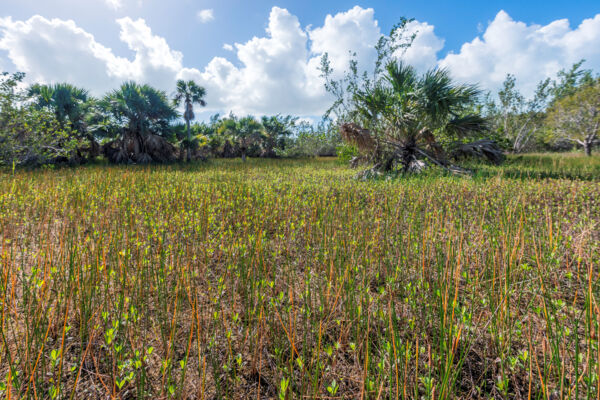
As of 2024, the Turks and Caicos Government continues to consider removing extensive areas from both the Frenchman’s Creek and Pigeon Pond Nature Reserve and the adjacent Chalk Sound National Park. Such proposed reductions include West Harbour Bluff, the Pirate’s Cave and Split Rock, the majority of coastline, and most of the beach in the nature reserve.
Despite massive outcry and receiving almost unanimous opposition during their public consultation period, the government continues to consider these reductions.
An outcome of the public opposition to the significant reduction to the nature reserve was an environmental and comprehensive impact assessment of the proposed changes in 2020. However, the government is unwilling to release the results of this assessment to the public.
